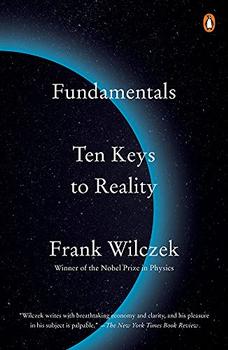Summary | Excerpt | Reviews | Beyond the book | Read-Alikes | Genres & Themes | Author Bio

How Biology Will Build the Next Technology Revolution
by Susan HockfieldIn the face of looming global challenges, such as overpopulation, resource depletion and disease, Dr. Susan Hockfield shows that sustainable solutions—those that can be maintained with little toll on the environment—could make impossible things possible. Hockfield is a neurologist and biologist, and the first woman and first life scientist to serve as president of MIT. A champion of interdisciplinary research and development, she sees a compelling new future in science: bioengineering. Hockfield uses her exclusive vantage point to share examples of these budding technologies and how they work, and goes on to explain how to make the most of this exciting moment.
Prior to delving into the not-so-distant future of what bioengineering has to offer, the author explores how science arrived on the cusp of a new technological revolution. The last major revolution was generated by the fusion of physics and engineering—Hockfield calls this "Convergence 1.0." Breakthrough discoveries in physics provided a more complete "parts list" for engineers to work with. These parts—the building blocks of physics—came from a deeper understanding of the physical world, in areas such as thermodynamics, hydro- and aerodynamics, electromagnetic theory and materials science, providing powerful concepts and materials that engineers could tinker with to make new things. Inventions that came out of this collaboration include radios, telephones, televisions, aircraft, computers, nuclear power, and the internet. Now, biologists are gathering their own parts list for their field, and are beginning to collaborate with engineers in what Hockfield terms "Convergence 2.0."
Many current, widely available technologies—such as those used to filter water, detect cancer or modify plants—can be improved. Hockfield explains that the methods behind these types of technologies "really aren't good enough. They're inefficient. They're slow." But Convergence 2.0 enables more options, more strategies and more experimental tools to engineer new advancements. They point towards a future that most people have not even imagined.
Five of the book's seven chapters explore engineered machines built with biological parts, referred to as "living machines." These include brain-powered prosthetics, which connect with a patient's existing neuromuscular system rather than recreating a new system. The biocompatible prosthetic moves more seamlessly than the devices used now, mimicking a regular limb's sophistication. Protein-based water filtration systems are another living machine. These are based on aquaporin—a naturally occurring protein that transports water into cells. Aquaporin filters allow water to pass through engineered protein membranes, removing around 95% of pollutants, such as salt.
Hockfield writes with excitement, wonder and hope about Convergence 2.0 and the potential of living machines, but she admits that nothing is certain. Historically, scientists are bad at predicting the impact of their innovations. Plus, there are huge barriers to implementing these developments on a wider scale. Enabling this revolution in the USA requires large-scale investment in research (See Beyond the Book), interdisciplinary and cross-institutional collaboration, clearer paths from development to the market, capital for new industries and policies that promote long-term fiscal investment and immigration. Hockfield believes that promoting immigration to the United States and collaboration between disciplines will unite world-class scientists, while increasing funds and working within industries will provide opportunities for their ideas to flourish.
The Age of Living Machines would be a valuable read for many people, because it gives hope in somewhat hopeless times. The United Nations estimate that the global population will be close to 10 billion by 2050, and the obstacles inherent in overpopulation are already being felt around the world, including resource depletion, energy crises and climate change. Recent innovations in bioengineering suggest that something can be done now to alleviate these problems, a potential for reprieve.
However, the language of this book is not ideal for all readers. Those with no science background will find it hard to understand the lingo and technical explanations. Those with well-rounded science backgrounds may be disappointed by the simplified information. But The Age of Living Machines provides an incredible glimpse of the future for science novices and intermediates, pop-science readers, science trend followers, futurists, and life-long learners interested in exploring notes and references.
For more information about the book, readers may be interested to listen to Hockfield's episode of the Free Library of Philadelphia's podcast, or read her interview with MIT News.
![]() This review was originally published in The BookBrowse Review in May 2019, and has been updated for the
May 2020 edition.
Click here to go to this issue.
This review was originally published in The BookBrowse Review in May 2019, and has been updated for the
May 2020 edition.
Click here to go to this issue.

If you liked The Age of Living Machines, try these:

by Mustafa Suleyman
Published 2025
An urgent warning of the unprecedented risks that AI and other fast-developing technologies pose to global order, and how we might contain them while we have the chance—from a co-founder of the pioneering artificial intelligence company DeepMind

by Frank Wilczek
Published 2022
One of our great contemporary scientists reveals the ten profound insights that illuminate what everyone should know about the physical world.
Your guide toexceptional books
BookBrowse seeks out and recommends the best in contemporary fiction and nonfiction—books that not only engage and entertain but also deepen our understanding of ourselves and the world around us.